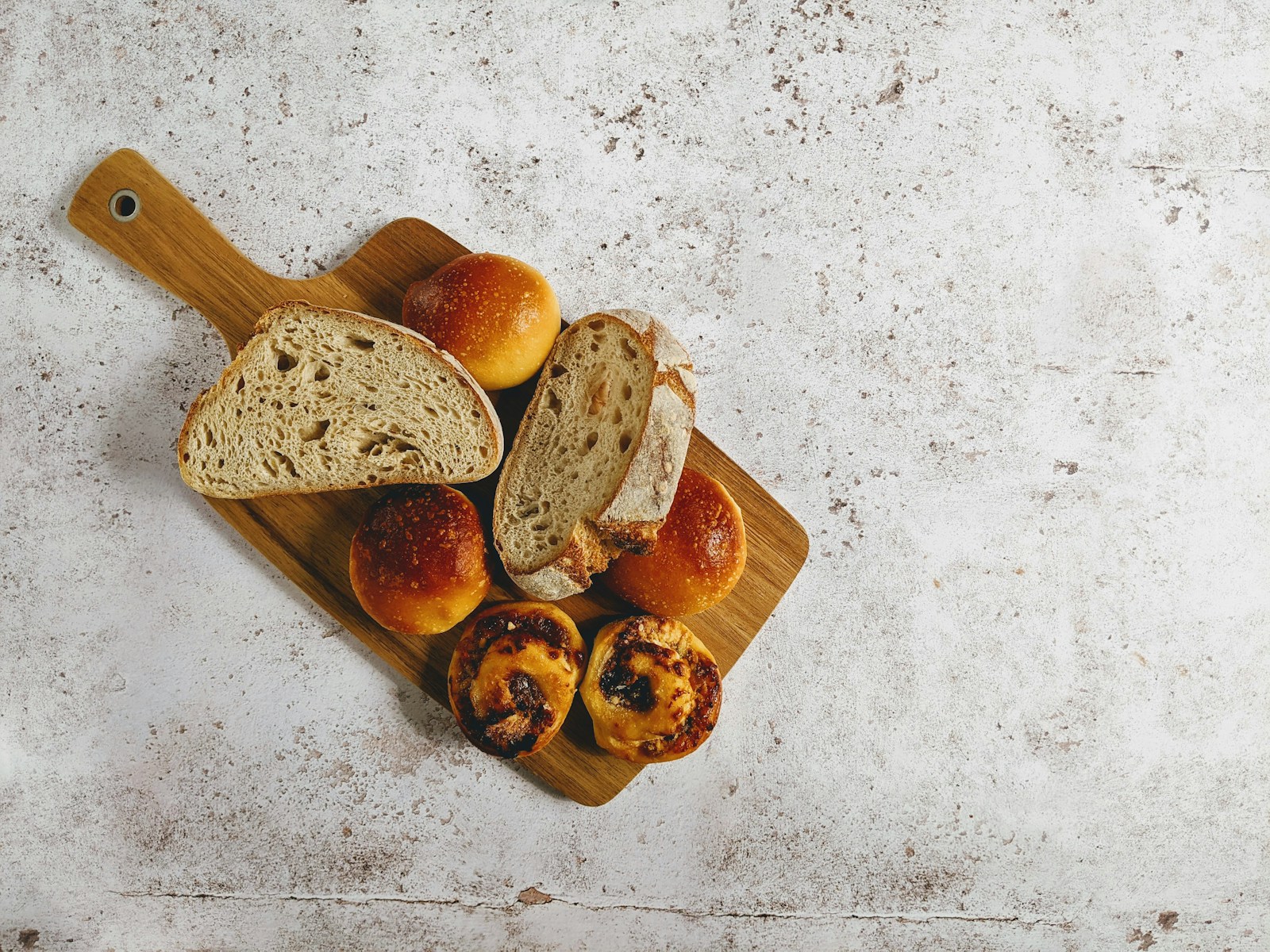Is Sourdough Bread Good for Diabetics? [Updated 2025]

Managing diabetes often revolves around making smart food choices, especially when it comes to carbs. Bread is a notorious culprit for causing blood sugar spikes, but not all types are created equal. Sourdough bread has caught attention for its slow fermentation process, which can affect how the body processes sugar. For diabetics, the answer is promising: sourdough may raise blood sugar slower than other bread types, making it a better option compared to highly processed varieties. Let’s explore why sourdough could be a smarter choice for maintaining balanced blood sugar levels.
Understanding Diabetes and Dietary Needs
Diabetes is a complex condition that significantly impacts one’s daily life, especially when it comes to food choices. For many, understanding how to properly balance meals becomes a crucial part of managing blood sugar levels. Let’s break this down into two important aspects: the types of diabetes and how carbohydrates influence the condition.
Types of Diabetes: Differentiate Between Type 1, Type 2, and Gestational Diabetes
Diabetes comes in different forms, and each type requires unique treatment and management. Knowing which type you’re dealing with is the first step toward making informed dietary decisions.
- Type 1 Diabetes: This is an autoimmune condition where the body attacks insulin-producing cells in the pancreas. With little to no insulin production, individuals with Type 1 need to manage blood sugar manually with insulin shots or pumps. Diet plays a significant role in stabilizing glucose levels.
- Type 2 Diabetes: Unlike Type 1, this type often develops gradually over time. The body either becomes resistant to insulin or doesn’t produce enough. It’s more common in adults and is often linked to lifestyle factors, such as diet and exercise. Many manage it through meal planning and medications.
- Gestational Diabetes: This occurs during pregnancy when hormonal changes lead to insulin resistance. While it usually resolves after childbirth, managing it is critical for the health of both the mother and baby.
If you’d like to explore more about the different diabetes types and dietary approaches, resources like Understanding Diabetes provide detailed insights.

Photo by Pavel Danilyuk
The Role of Carbohydrates in Diabetes
Carbohydrates are one of the most talked-about nutrients when it comes to managing diabetes—and for a good reason. They directly affect blood sugar levels, making their intake crucial for maintaining glucose balance.
- How Carbs Work: After eating carbohydrates, your body breaks them down into glucose, a primary energy source. For those without diabetes, insulin helps regulate glucose. However, in diabetics, this process can be impaired.
- Why It Matters: Consuming too many high-carb foods can result in blood sugar spikes. That’s why many diabetic diets focus on low-glycemic foods, which release sugar more slowly into the bloodstream.
- Key Tips:
- Opt for whole grains over refined carbs.
- Pair carbs with protein or fat to slow sugar absorption.
- Monitor portion sizes to avoid sudden spikes.
For more on understanding carbs and their role in diabetes, visit Carbs and Diabetes | ADA and Carbohydrates and Diabetes | UCSF Health.
It’s clear that diet isn’t just about what you eat but how what you eat interacts with your body. Making small adjustments can lead to significant improvements in blood sugar management.
Key Takeaways
Sourdough bread stands out as a potential bread option for people with diabetes due to its unique fermentation process and lower glycemic index. By focusing on these aspects, let’s break down the most important points you should know.
Sourdough Bread Has a Lower Glycemic Index
The glycemic index (GI) measures how quickly a carbohydrate-containing food raises blood sugar levels. Sourdough bread has a GI that is typically lower than regular white or whole wheat bread. This is due to the slow fermentation process, which alters the structure of carbohydrates and makes them digest more slowly.
- Compared to traditional bread, sourdough can cause a more gradual rise in glucose levels.
- The fermentation process increases resistant starch, which is harder for the body to break down, delaying sugar absorption.
For more on the glycemic index of sourdough and its impact, check out Is Sourdough Bread Healthy? | Cleveland Clinic.
Nutritional Benefits of Sourdough Bread
Sourdough bread isn’t just about taste or texture; its nutritional profile can be beneficial for diabetes management. The fermentation process boosts vitamins and minerals, enhancing its overall nutritional value.
- Rich in nutrients: It’s often higher in folate, magnesium, and antioxidants compared to processed breads.
- Easier to digest: The fermentation helps break down gluten and other compounds, making it more gut-friendly.
If you’re exploring healthier bread options, sourdough’s balance of nutrients might make it an ideal choice. Read more about the health benefits in Is Sourdough Bread Good for You? | GoodRx.

Photo by RDNE Stock project.
Resistant Starch: A Hidden Benefit
Resistant starch is a type of carbohydrate that resists digestion in the stomach and small intestine, meaning it doesn’t immediately raise blood glucose levels. Sourdough bread typically has higher resistant starch levels due to its unique preparation.
- Supports blood sugar control: This starch slows the release of sugar into the bloodstream, providing extended energy without sharp spikes.
- Good for gut health: Resistant starch serves as prebiotics, feeding beneficial gut bacteria.
Want to dive deeper into resistant starch and its role in diabetes? Check out Sourdough Bread & Diabetes | The Sourdough School.
Whole Grain Sourdough is Even Better
Not all sourdough bread is the same. Whole grain sourdough provides additional benefits, such as higher fiber content, which helps in slowing digestion and regulating blood sugar.
- Fiber-rich options: Choose sourdough made with whole grains rather than refined flour.
- Enhanced satiety: Fiber keeps you feeling fuller for longer, aiding in portion control.
Whole grain sourdough is not just good for diabetics but also promotes heart health. Check out more on the benefits in Best Bread for Diabetics | Wildgrain.
These points provide a solid foundation for deciding whether sourdough bread fits into a diabetic-friendly diet. Understanding its benefits emphasizes smarter food choices that support blood sugar control.
What is Sourdough Bread?
Sourdough bread stands out from the crowd with its distinct taste, chewy texture, and natural production method. Unlike most breads made with commercial yeast, sourdough is crafted using a live fermented culture called a “starter.” This starter contains wild yeast and good bacteria, which give the bread its unique flavor and properties. But beyond its taste, sourdough’s preparation process significantly impacts its nutritional profile, making it a topic of interest for people managing conditions like diabetes.
The Fermentation Process: How Natural Fermentation Alters the Bread’s Nutritional Profile
The magic of sourdough lies in its fermentation process, which is a slow and natural method where the starter’s yeast and bacteria pre-digest the dough. Why does this matter? During fermentation:
- Carbohydrates are broken down, which can lower the glycemic index of the bread.
- Gluten is partially broken down, making the bread easier to digest.
- The process produces lactic acid, which interacts with nutrients and makes them more bioavailable.
This method also increases the levels of resistant starch, a special type of carbohydrate that doesn’t convert into glucose rapidly, helping with blood sugar management.
For more details on why the fermentation process is key, see this guide from BBC Good Food.

Photo by Cats Coming
Nutritional Benefits of Sourdough Bread: Fiber, Resistant Starch, and More
Sourdough bread isn’t just delicious—it’s packed with nutrients that are beneficial for overall health, especially for those managing their sugar levels. Key nutrients and benefits include:
- High in Fiber: Sourdough made from whole grains contains more fiber, which slows digestion and prevents rapid sugar spikes.
- Resistant Starch: The unique fermentation process boosts resistant starch, which helps control blood sugar levels.
- Rich in Vitamins and Minerals:
- Folate and B vitamins: Crucial for cell health and energy.
- Magnesium: Supports muscle function and insulin regulation.
- Zinc and iron: Essential for immunity and oxygen transport.
Additionally, sourdough bread has antioxidant properties, which can reduce inflammation and lower the risk of chronic diseases like heart disease.
Curious about the health benefits? Check out Healthline’s guide to sourdough bread for more.
This fermentation-driven bread is a nutrient powerhouse, offering real advantages that traditional bread simply can’t provide.
Glycemic Index and Sourdough Bread
When determining how well-suited sourdough bread is for diabetics, the glycemic index (GI) plays a crucial role. The GI measures how quickly a carbohydrate-containing food raises blood sugar levels. Foods with a lower GI are digested more slowly, causing a gradual increase in blood sugar—something particularly beneficial for people managing diabetes.
Comparing Sourdough to Other Breads
Sourdough bread generally ranks lower on the glycemic index compared to standard options like white bread or even some whole wheat varieties. Here’s a breakdown:
- White Bread: This type of bread typically has a GI of 70 or higher, meaning it causes blood sugar to spike quickly after consumption.
- Whole Wheat Bread: While slightly better, its GI still hovers around 69, which can still lead to rapid sugar absorption.
- Sourdough Bread: Sourdough bread usually has a GI between 43 and 53, largely thanks to its slow fermentation process that modifies the structure of its carbohydrates. This alteration slows digestion and reduces the bread’s impact on blood sugar.
These differences highlight why sourdough could be a better bread choice for diabetics. For more information on its glycemic index, see Is Sourdough Bread Good for You? | GoodRx.
Research Findings on Sourdough and Blood Sugar
Scientific studies support the lower glycemic impact of sourdough bread. Here’s what research has revealed:
- A study published in the Journal of Nutritional Science found that sourdough bread contributes to significantly reduced postprandial glycemia, particularly when made with whole wheat flour. This means it helps manage blood sugar levels after eating.
- According to an observation shared in PubMed, sourdough bread improved glucose homeostasis in participants, demonstrating its potential to support better long-term blood sugar control.
- Dietary interventions with sourdough have also been explored for diabetes management in preclinical studies. One such study noted improvements in glycemic biomarkers and a reduction in insulin resistance in diabetic rats (BMC Nutrition).
These findings suggest that sourdough bread can outperform traditional bread types when it comes to balancing blood sugar. Its unique fermentation process not only lowers GI but may also impart other health benefits that are helpful for diabetics.

Photo by Pixabay
Benefits of Sourdough Bread for Diabetics
Sourdough bread stands apart from other types of bread due to its unique fermentation process and potential health benefits, especially for those managing diabetes. Its natural preparation method impacts how the body digests and processes its nutrients, making it particularly noteworthy for blood sugar management and overall health.
Lower Blood Sugar Spikes
One of the most significant benefits of sourdough bread for diabetics is its potential to lead to more stable blood sugar levels. Unlike traditional bread, sourdough undergoes a slow fermentation process that alters its carbohydrate structure. This process creates resistant starch, which is harder for the body to break down quickly, resulting in slower glucose absorption.
- Prevents sugar spikes: Sourdough bread has a lower glycemic index (GI) compared to regular white or whole wheat bread. With a GI typically ranging from 43 to 53, it offers a gradual glucose release into the bloodstream.
- Scientific support: A study from The Sourdough School revealed that sourdough bread moderates post-meal blood sugar better than standard breads.
This steady energy release makes sourdough bread a preferable option for diabetics aiming to avoid rollercoaster blood sugar levels.
Improved Gut Health
The fermentation process behind sourdough bread isn’t just about flavor—it also boosts gut health. The live bacteria and yeast in the starter produce compounds during fermentation that have beneficial effects on digestive health.
- Rich in probiotics: The natural fermentation creates lactic acid bacteria, which can promote a healthy gut microbiome.
- Easier on digestion: The breakdown of gluten and antinutrients during fermentation reduces bloating and discomfort often associated with other breads.
- Prebiotic fibers: Resistant starch in sourdough acts as a prebiotic, feeding beneficial gut bacteria.
Gut health and blood sugar regulation are closely connected. A healthier gut can improve how your body responds to insulin. Learn more in this article from WebMD.

Photo by Ivan Torres
Nutritional Value Compared to Other Breads
Sourdough bread isn’t just about blood sugar. Its nutritional profile is another reason diabetics should pay attention. The fermentation method enhances the bioavailability of nutrients, offering more health benefits with every bite.
- Vitamins and minerals: Sourdough is high in folate, magnesium, zinc, and antioxidants. These nutrients are essential for cellular health and fighting inflammation.
- Higher protein content: With around 8 grams of protein per serving (depending on the recipe), sourdough keeps you fuller longer.
- Lower sugar levels: Sourdough contains less sugar than commercially processed breads, making it a smarter carb option.
When comparing sourdough with other types of bread, it consistently comes out on top for diabetes management. Find out more in detail through Healthline’s guide.
For diabetics, smaller daily choices, like switching to sourdough bread, can contribute to long-term benefits, including better energy and improved gut health.
Choosing the Right Sourdough Bread
Sourdough bread is often a top choice for people with specific dietary needs, including those managing diabetes. However, not all sourdough bread is created equal. Factors like the type of flour and the ingredients used can significantly impact its nutritional value and potential benefits. Let’s look at what you need to know when selecting the best sourdough loaf for a diabetic-friendly diet.
Whole Grain vs. White Sourdough: Advantages of Whole Grain Sourdough
Whole grain sourdough is considered the gold standard when it comes to health benefits, particularly for those managing blood sugar. Why? It all comes down to the fiber, nutrients, and slower digestion provided by whole grains.
- Fiber Improves Digestion: Whole grain sourdough contains more dietary fiber than white sourdough, which can slow digestion and help regulate blood sugar. Fiber essentially acts as a “speed bump” for sugar entering the bloodstream.
- Blood Sugar Control: The glycemic index of whole grain sourdough is usually lower than white sourdough. This makes it less likely to cause blood sugar spikes.
- Enhanced Nutrition: Whole grain flour retains more nutrients like magnesium, zinc, and B vitamins during the milling process compared to refined white flour.
To find out more about the health differences, check out Sourdough Vs Whole Wheat Bread: Which is Better for You?.
When it comes to your next grocery trip, ask yourself: Is the bread labeled as “100% whole grain”? Always go with options that feature whole grains as the primary ingredient.

Photo by Michaela St
Reading Labels and Ingredients: What to Look For
Navigating bread labels can sometimes feel like deciphering a secret code. Knowing what to look for will help you avoid hidden sugars and unnecessary additives that could derail your health goals.
Here are some tips and tricks to make reading bread labels simple:
- Focus on the First Ingredient: Look for “whole grain flour” or “whole wheat flour” as the first listed ingredient. If it says just “wheat flour” or “enriched flour,” this is not a whole grain product.
- Check for Additives: Avoid breads with added sugar, artificial preservatives, or long lists of unrecognizable ingredients. Stick to options with simple components like flour, water, salt, and starter.
- Fiber Content Matters: Aim for at least 2-3 grams of fiber per slice. Higher fiber levels slow down sugar absorption.
- Watch for Sodium: Salt is an essential part of bread-making, but choose lower-sodium options when possible.
Learn more about decoding labels with guides like Decoding Bread Labels. Investing time in reading these details ensures you’re making the healthiest choice for your blood sugar and overall health.
By choosing whole grain sourdough and carefully reading ingredient labels, you can ensure that your bread choice supports better blood sugar management while also providing essential nutrients.
Portion Control and Moderation
When managing diabetes, the amount of food you eat can be just as important as the type of food you choose. Portion control and moderation are essential tools for stabilizing blood sugar levels while also supporting overall health. By learning to manage portions wisely, diabetics can enjoy a variety of foods without compromising glucose control.
Why Portion Sizes Matter for Diabetics
Portion sizes directly impact the body’s response to food, especially for those managing diabetes. Large portions of carbohydrate-rich foods can lead to rapid blood sugar spikes, making effective portion management a must.
- Blood Sugar Spikes: Overeating carbs, even healthy ones, can overwhelm the body’s insulin response. Smaller portions make it easier to control these levels.
- Calorie Management: Maintaining a healthy weight is essential for diabetes management, and portion control helps regulate calorie intake without restrictive dieting.
- Improved Digestion: Eating moderate portions prevents overloading the digestive system, keeping glucose absorption steady.
For practical guidance on meal planning and portion control, visit Diabetes Meal Planning | CDC.

Photo by Kaboompics.com
Strategies for Effective Portion Control
Wondering how to start with portion control? It doesn’t mean skimping on flavor or satisfaction. These strategies can help:
- Use the Plate Method:
- Fill half your plate with non-starchy vegetables (e.g., spinach, broccoli).
- One-quarter for lean protein (like chicken or fish).
- The remaining quarter for whole grains or starchy foods, such as sourdough bread.
- Measure and Weigh: Invest in measuring cups or a food scale. For example, aim for a slice of sourdough about the size of your palm.
- Mindful Eating:
- Eat slowly to recognize fullness cues.
- Avoid distractions like TV during meals, which may lead to overeating.
- Pre-Portion Snacks: Divide snacks like nuts, fruit, or bread slices into single servings. This avoids impulsive munching.
For inspiration on portion sizes tailored to diabetics, check out Optimising Blood Glucose Control | PMC.
Benefits of Moderation
Moderation goes hand-in-hand with portion control, emphasizing balance over restriction. This approach helps diabetics maintain healthy habits without feeling deprived.
- Flexibility: Enjoy occasional treats, like a crusty sourdough roll, without straying from your health goals.
- Sustainable Habits: Extreme dieting isn’t sustainable. Moderation ensures longevity in healthy eating habits.
- Balanced Nutrition: Over-focusing on one nutrient, like carbs or fat, can lead to deficiencies. Moderation promotes a diverse and balanced diet.
Learn more about the connection between portion control and blood sugar stability from Diabetes And Portion Control | Diabetes Care Community.
By mastering portion control and embracing moderation, you can enjoy foods like sourdough bread as part of a well-rounded, diabetic-friendly diet.
Conclusion
Sourdough bread can be a smart choice for people managing diabetes. Its lower glycemic index, increased resistant starch, and potential gut health benefits set it apart from traditional options. However, portion control and whole grain varieties are critical for maximizing its advantages.
Consult with your healthcare provider to ensure sourdough fits your individual dietary needs. If managed correctly, it can be part of a satisfying and diabetes-friendly diet that doesn’t compromise flavor or nutrition.





